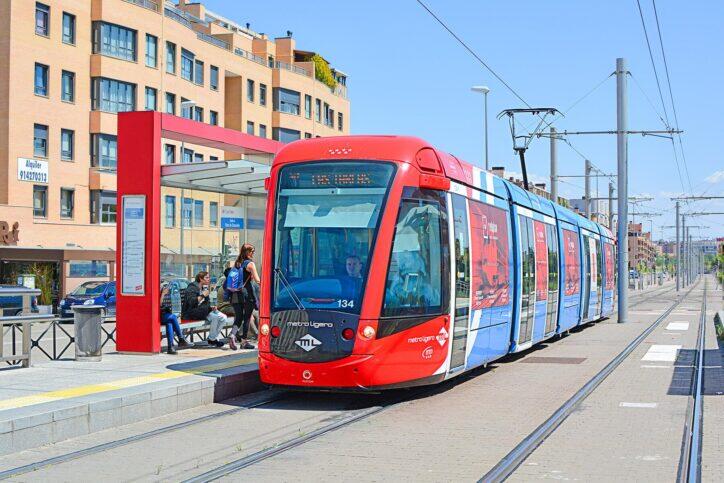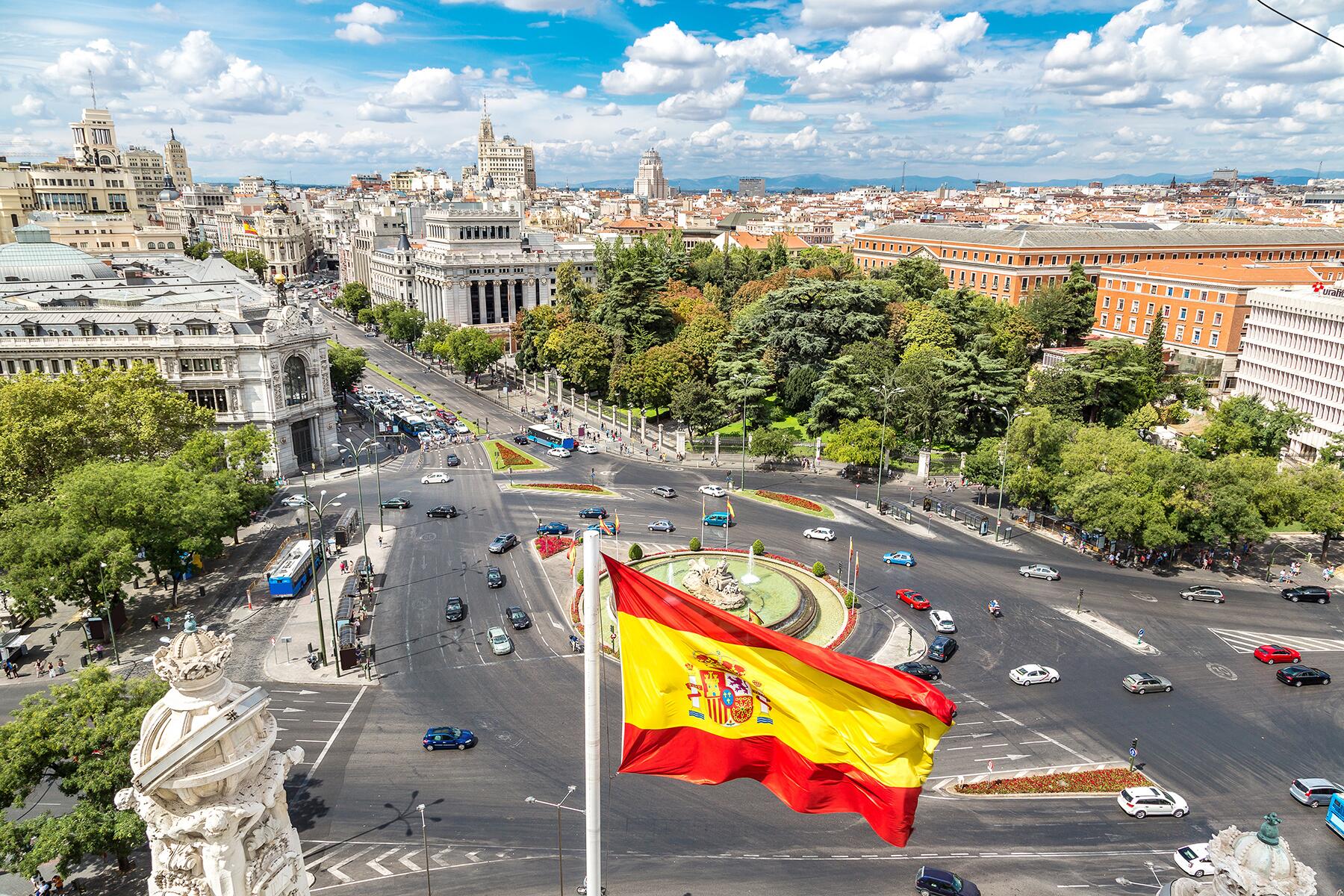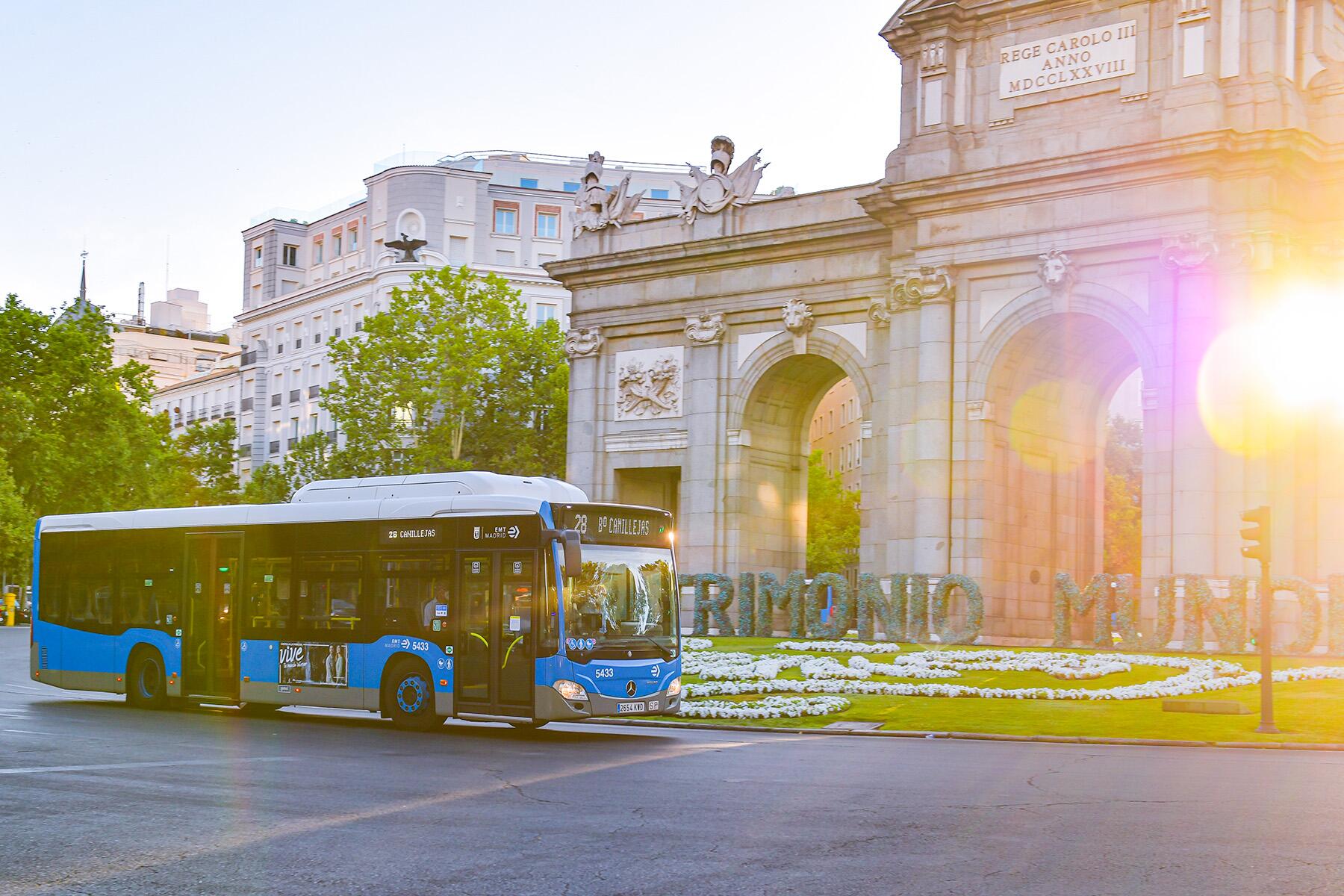Madrid is truly a city that never sleeps, so you'll want to figure out how to safely get around at all hours.
A capital city that dazzles with its art, culture, history, and cuisine, a casual day in Madrid will have you admiring the masterpieces of the Prado Museum, strolling along the elegant Gran Vía, sampling the delicious tapas of La Latina and rounding it all off with the nightlife of Malasaña.
Unless you’re lucky enough to have a private driver (or just really, really like long walks), you’ll probably want to utilize Madrid’s public transport scene to get around. Luckily, once you know the ropes, it’s pretty easy (and budget-friendly) to master.
While you’ll want to use common sense and keep your wits about you as you would anywhere in the world, Madrid’s public transport system is very safe. There are cameras and staff all over and, from personal experience of solo traveling through Madrid as a woman, it feels safe to use even at night.
Madrid has one of the best and most extensive public transportation systems in Europe, covering every corner of the city and beyond. You can easily and affordably hop on a metro, bus, light rail, regional train, or electric bike and explore Madrid like a local. Here’s how!

How to Take the Madrid Metro
The metro is the fastest and most efficient way to get around Madrid, and around 70% of its stations are accessible. It covers most of the city and connects to the main tourist spots, train stations, and airport. The metro operates from 6 a.m. to 1:30 a.m. every day, and trains run every few minutes during peak hours.
Recommended Fodor’s Video
To use the metro, buy a ticket or a card at the station or online. There are different types of tickets and cards depending on how often you plan to use the metro and where you want to go. The most common ones are:
– Single ticket: Valid for one journey within the same zone. The price varies from €1.50 to €2 depending on the number of stations you travel through.
– 10-trip ticket: Valid for 10 journeys within the same zone. The price is €12.20 and you can share it with other people.
– Tourist ticket: Valid for unlimited journeys within the selected zones for 1, 2, 3, 5, or 7 days. The price ranges from €8.40 to €35.40 depending on the duration and the zones. This ticket also includes the airport supplement, which is normally €3 extra for single tickets.
– Multi card: A reusable and rechargeable card that you can load with single tickets, 10-trip tickets, or tourist tickets. The card itself costs €2.50 and you can buy it and top it up at the station or online.
The accessible stations here all have elevators, ramps, tactile paving, braille signs, and audio information. Make sure to tap in and out when using the metro and keep it on you at all times, as ticket inspectors can ask to check it at any time.

How to Take the Madrid Bus
Want to see more of the city or reach areas that the metro doesn’t reach? Madrid’s bus system is an easy and efficient way of getting around, especially during the night. Buses typically run from 6 a.m. to 11:30 p.m. every day, and some routes operate 24 hours as night buses (“búhos” or “owls”).
Buy a ticket or a card on board or at the station. The same tickets and cards that work for the metro also work for the buses, except for the single ticket, which costs €1.50 regardless of the distance. You can also buy a monthly pass (“abono transportes“) if you plan to stay longer in Madrid and use public transportation frequently.
You can find the bus map and timetable at the station, on the bus, or just by Googling it. All of Madrid’s buses have low floors, ramps, kneeling systems, reserved seats, wheelchair spaces, and visual and acoustic signals, which helps to make them a more convenient option for travelers with specific accessibility needs.

How to Take the Madrid Light Rail and Regional Trains
If you want to travel outside the city center or visit nearby towns and cities, you can use the light rail or the regional trains. The light rail (“Metro Ligero” or “ML”) is a tram system that connects some of the suburbs and business districts of Madrid. The regional trains (“Cercanías” or “C”) are commuter trains that link Madrid with other municipalities and provinces.
To use the light rail or the regional trains, buy a ticket or a card at the station or online. The same tickets and cards that work for the metro and the buses also work for the light rail and the regional trains, except for the tourist ticket, which only covers the light rail within zone A.
You can also buy a combined ticket (“Bono Combinado Cercanías“) that allows you to use the metro, the buses, and the regional trains within the same zone for a single journey.
Confused? The light rail and the regional trains map are integrated with the metro map and follow the same color-coding and numbering system. But the staff are usually super helpful and speak English well, so don’t be afraid to ask if you can’t figure it out yourself.

How to Use Madrid’s Electric Bikes
To use the electric bikes, you need to register online or at the station and get a card or a code. Choose between different plans depending on how often you plan to use the bikes and how long you want to ride them.
Most tourists will want the “Occasional plan”, which is valid for 1, 3, or 5 days and costs from €2 to €10 depending on the duration. You’ll also pay €0.50 for the first 30 minutes of each journey, €0.60 for the next 30 minutes, and €4 for every additional hour.
If you fall in love with Madrid and decide to spontaneously move here, choose the Annual plan for a much more budget-friendly option. And, if you’ve got a specific cycle path in mind but need to get to that point first, you’re allowed to bring the bike on public transport. Just make sure there are no more than two bikes at any one point of the carriage.
On Foot
If you’re staying in Madrid Centro and just want to see the city’s big hitters, you can likely survive just on your own two feet. Unless you’ve got a specific itinerary in mind, we’d recommend taking a stroll around the city first to get a feel for distances before deciding which (if any) public transport you’ll use during your time here. Have fun!




